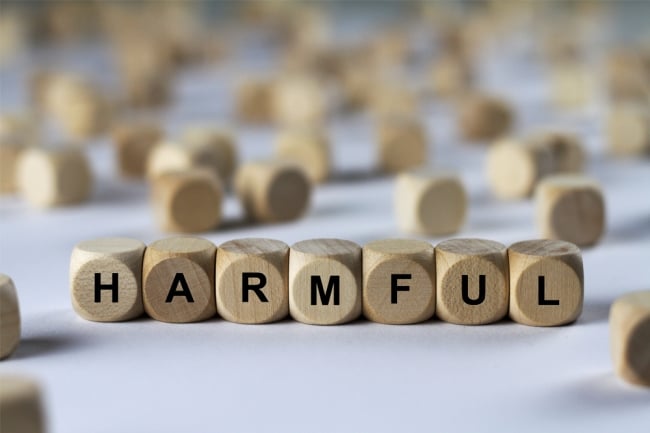You have /5 articles left.
Sign up for a free account or log in.

domoskanonos from Getty Images
Based on recent conversations in higher education, you’d think that college students are playing a little too fast and loose with terms like “harm” and “trauma”. In just the last few months, students shouted down a controversial federal judge at Stanford University and objected to an art exhibit at Macalester College, prompting the college to temporarily close the exhibit—all with recourse to arguments about the negative impact of the content on their psychological safety and emotional well-being.
The reaction from senior leaders, administrators and faculty has been decidedly mixed. Some interpret students’ harm claims as an invitation to reflect on the meaning of inclusion and belonging in the modern university. Others see them as just the latest example of woke culture run amok, a sign that we’ve gone too far accommodating “diversity” in higher education, and ultimately an existential threat to academic freedom as we know it.
Opinions certainly vary, but the conversation over the language of harm and trauma does reveal something we’ve struggled to name thus far: in pursuit of “diversity”, today’s selective colleges and universities go out of their way to recruit students from historically marginalized backgrounds, especially students from low-income communities of color. But while institutions seek to create a diverse student body, they don’t account for the wider systems of oppression that have impacted and, indeed, harmed many nontraditional students and their communities. Unfortunately, the resulting trauma doesn’t magically disappear when students arrive on a college campus.
We’ve known for a while that students’ previous traumatic experiences can manifest in the college classroom. Take for example a course in which an instructor assigns texts with graphic descriptions of torture or films with vivid depictions of wartime havoc. Some students won’t bat an eye. Others will struggle. Today, a large number of students might fall into that latter category: former combatants in war zones, recent refugees from Ukraine, Haitian migrants whose families escaped vicious natural disasters that laid waste to their homes and communities. To address the so-called sensitivities of these “diverse” students, many faculty have adopted new pedagogical practices like trigger warnings—a fine solution, if that’s the right word. But it papers over the bigger picture.
Let’s return to Haiti, as one example. Over the centuries, Euro-American imperialism and global capitalism stripped nonwhite peoples of wealth and resources, leaving in their wake impoverished societies like Haiti’s that are less capable of withstanding and rebounding from climate catastrophe. Without discussing that kind of wider historical and sociopolitical framework in relation to where our students come from, we allow opponents to drive the false narrative that today’s faculty are simply giving in to the whims of overly emotional coddled snowflakes. We also feed a pervasive belief that students from historically marginalized backgrounds are emotionally fragile when, in fact, they are precisely what an unequal and unjust world rife with resource-hoarding has made of them, and of us all.
That’s inside the college classroom, but what about outside? Campus police presence comes to mind. When I worked as an administrator at an Ivy League university, part of my responsibilities involved coordinating a weeklong training for student leaders who would go on to serve as residential college advisors to incoming first-years in an eight-week residential summer program. The training included mandatory sessions with different campus units, from the Women’s Center and the LGBT Center to Counseling and Psychological Services and Campus Safety.
For the latter training, a public safety officer came to speak with student leaders about the most common issues they were likely to confront with their summer charges—drunkenness, possibly vandalism, general first-year debauchery. In the course of the discussion, the officer explained that they kept firearms in the trunks of their vehicles. His statement was likely intended to make students feel safer, but it did not have that effect on all students who attended the training.
Shortly after the session, one of my student trainees described feeling deeply unsettled by the exchange. She explained that she came from a community where gun violence and over-policing were distressingly common. For her, armed police officers did not guarantee safety; they brought death and destruction.
This example is revealing in at least two ways. First, it illuminates how and why students from systems-impacted communities may experience business as usual on college campuses—in this case, your average student leadership training—differently than others. Second, it’s a stark reminder that harm and trauma are more than mere words. Rather, they are the inevitable consequences of living in a society rife with inequality and violence, in which some bear the brunt of that burden more than others. Absent that broader structural analysis, though, it’s all too easy to construe students’ use of harm and trauma claims as simply the woke weaponry of a too-soft generation.
To be sure, in our increasingly therapeutic culture, terms like PTSD and trauma are bandied about far too often. Words are coopted; concepts lose meaning. But, to my mind, colleges and universities need to recognize that enhancing student diversity on campuses is about a lot more than just including “new voices” and “different perspectives”. While I recognize that there are no quick-fix solutions here, new perspectives can get us closer to that destination by prompting far more productive dialogue among us. In the end, we need to find a way to embrace the complicated histories that our students—like all of us——carry with them when they arrive on college campuses.




